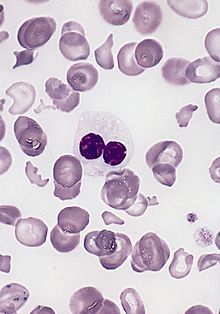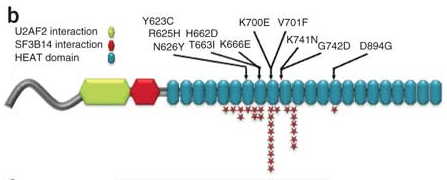As a follow-up to my previous post, Disease-causing Mutations Discovered by NGS in 2011, I’ve attempted to compile cancer genome and exome sequencing studies published last year. For this compilation, I’ve emphasized publications in which whole-genome or exome sequencing was employed to multiple tumors or cancer cell lines, with the goal of identifying significantly altered genes or pathways in malignant cells. Even with these restrictions, the list of papers in 2011 was rather extensive. Links are provided to Pubmed for the citations; when a “key finding” is a link, it points to previous Massgenomics posts on the study. I’ve broken the publications down into several categories:
Cancer whole-genome sequencing
Exome sequencing of leukemia
Exome sequencing of carcinoma
Exome sequencing of melanoma
Pancreatic, gastric, and prostate cancer exomes
Whole-genome sequencing (WGS) studies
Several whole-genome sequencing studies of cancer were published last year. The largest of these was a study from the Broad Institute, in which whole-genome sequencing or exome sequencing was applied to 38 multiple myeloma tumors.
|
||||||||||||||||||||||||||||||||||||||||
Exome sequencing of leukemia
Several types of leukemia were characterized by exome sequencing, including chronic lymphocytic leukemia (CLL), acute myeloid leukemia (AML), acute monocytic leukemia (M5 AML), and pediatric acute lymphocytic leukemia (ALL).
|
||||||||||||||||||||||||
Exome sequencing of carcinoma
Exome sequencing was also applied to many solid organ tumors, particularly carcinomas. The Cancer Genome Atlas research network published a landmark study of high-grade serous ovarian carcinoma, the first of several common cancers to be characterized by TCGA. A number of other TCGA efforts will likely see publication in 2012, including breast cancer, colorectal cancer, glioblastoma, and leukemia.
|
||||||||||||||||||||||||
Exome sequencing of melanoma
Melanoma was another cancer type surveyed by multiple exome sequencing studies in 2011. Interestingly, two studies of melanoma cell lines revealed frequent mutations in mitogen activated protein (MAP) kinase kinase [kinase] genes MAP2K1, MAP2K2, MAP3K5, and MAP3K9.
|
||||||||||||||||||||
Pancreatic, gastric, and prostate cancer
Finally, I have a category of “other cancers” with exomes published in 2011; these include pancreastic cysts and cell lines, gastric cancer tumors, and prostate cancer samples derived through mouse xenograft models.
|
||||||||||||||||||||||||
Conclusion and Outlook
Around 700 individual tumors representing 17 major cancer types were characterized in the studies above. That’s an astonishing number, but it’s only the tip of the iceberg. This year will see the publication of thousands or tens of thousands of cancer genomes/exomes. New genes and pathways will be identified. Mutational patterns will be revealed. Novel therapeutic targets will be suggested. I think that 2012 will be an exciting year for cancer genomics.
References
Ding L, Wendl MC, Koboldt DC, & Mardis ER (2010). Analysis of next-generation genomic data in cancer: accomplishments and challenges. Human Molecular Genetics, 19 (R2):R188-96. PMID: 20843826


